Campeche is home to an incredible variety of birds. From the majestic Roseate Spoonbill to the colorful and rare Resplendent Quetzal, the state of Campeche in Mexico is a paradise for birdwatchers.
With a wide range of ecosystems, species from both North and South America can be found in the area. A trip to Campeche will give one the chance to see a wide range of birds in their natural habitat, from shorebirds to waterfowl, hummingbirds to raptors.
With a rich diversity of habitats, Campeche offers something for every level of birdwatcher.
1. White-winged Dove
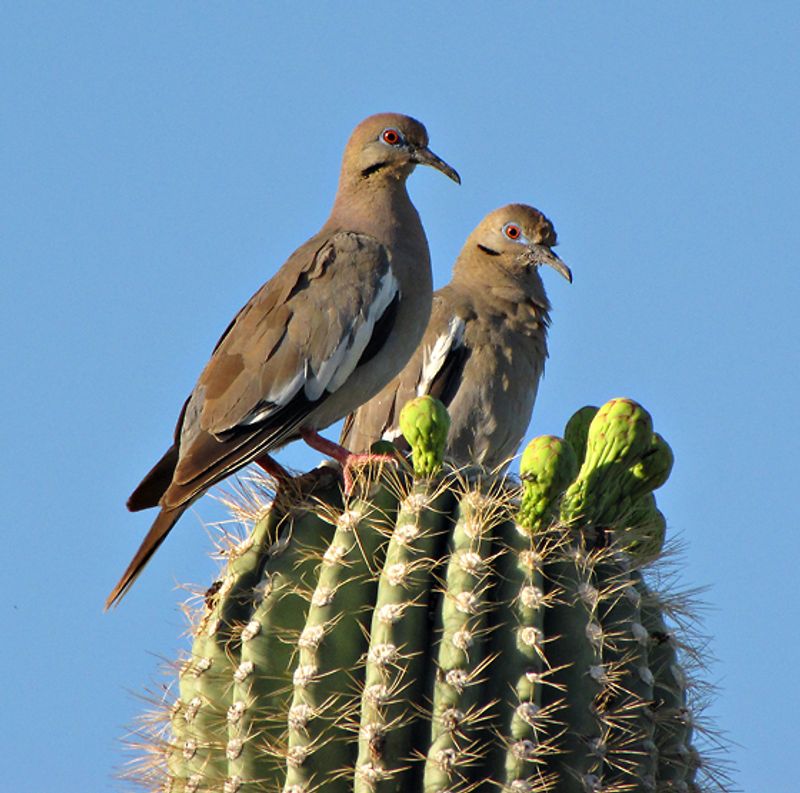
The white-winged dove is a species of dove that is found in many parts of the world. It has a wide native range extending from the Southwestern United States through Mexico, Central America, and the Caribbean.
These birds are known for being quite large in size compared to other doves, and they can be identified by a unique white edge on their wings. This white edge is what gives them their name.
In addition to this, the white-winged dove also has blue eyering and red eyes, which further distinguish them from other dove species. These birds are mainly found in open woodlands and grasslands, and they are known to feed on various seeds and fruits.
They are also known to form large flocks when foraging for food, which makes them easy to spot in their native habitats. Despite their wide distribution range, the white-winged dove is considered near threatened due to the loss of its habitat to human activities.
Conservation efforts are being made to help protect this species and ensure its future survival.
| Kingdom | Animalia |
| Phylum | Chordata |
| Class | Aves |
| Order | Columbiformes |
| Family | Columbidae |
| Genus | Zenaida |
| Species | Z. asiatica |
2. Ocellated Turkey
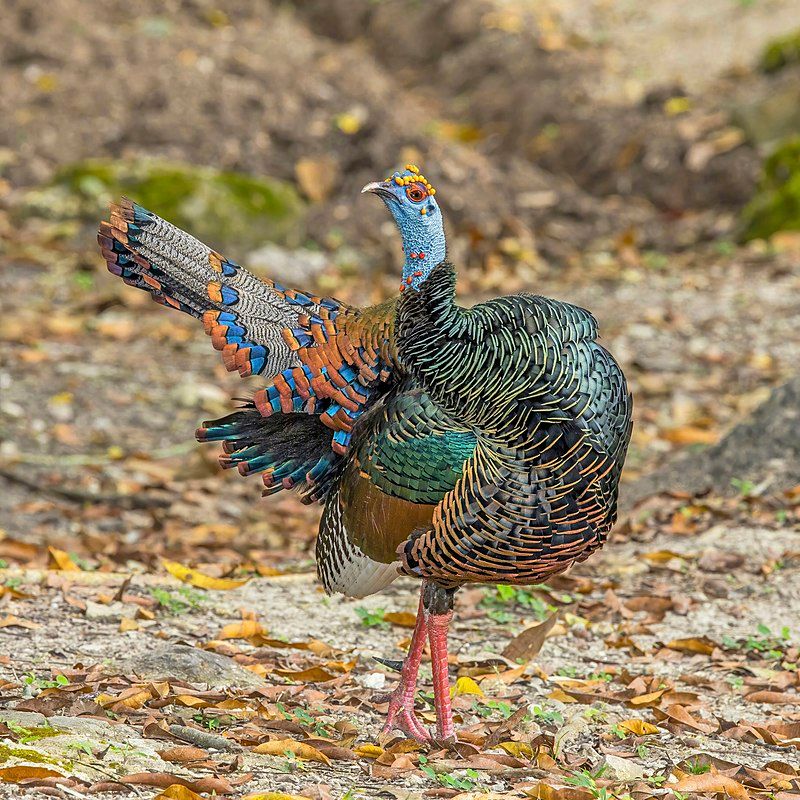
The ocellated turkey is an impressive bird, native to the Yucatán Peninsula, Mexico, and parts of Belize and Guatemala. It is the only species of turkey in existence that inhabits this region.
The ocellated turkey is known for its long, colorful tail feathers, which are patterned with shimmering blue, green, and copper colors. The rest of the bird is usually grey, with a metallic green sheen.
Males also have a snood, a fleshy red structure on the head that can be extended during courtship displays. Typically, the ocellated turkey is smaller than its North American counterparts, and it also has a longer life expectancy than other turkey species.
The ocellated turkey is an omnivore, consuming primarily a variety of fruits, berries, and nuts, supplemented by some insects and other small animals. They also feed on the ground, eating fallen fruits and seeds.
It is most active in the early morning and late afternoon, when it forages for food.
The ocellated turkey is an important part of the Yucatán Peninsula’s ecosystem, providing food for other animals such as jaguars and ocelots, as well as being an important part of the local economy.
Hunting of the ocellated turkey is closely regulated, with only limited hunting seasons and bag limits. This helps to ensure the continued sustainability of the species and its environment.
| Kingdom | Animalia |
| Phylum | Chordata |
| Class | Aves |
| Order | Galliformes |
| Family | Phasianidae |
| Genus | Meleagris |
| Species | M. ocellata |
3. Pied-billed Grebe
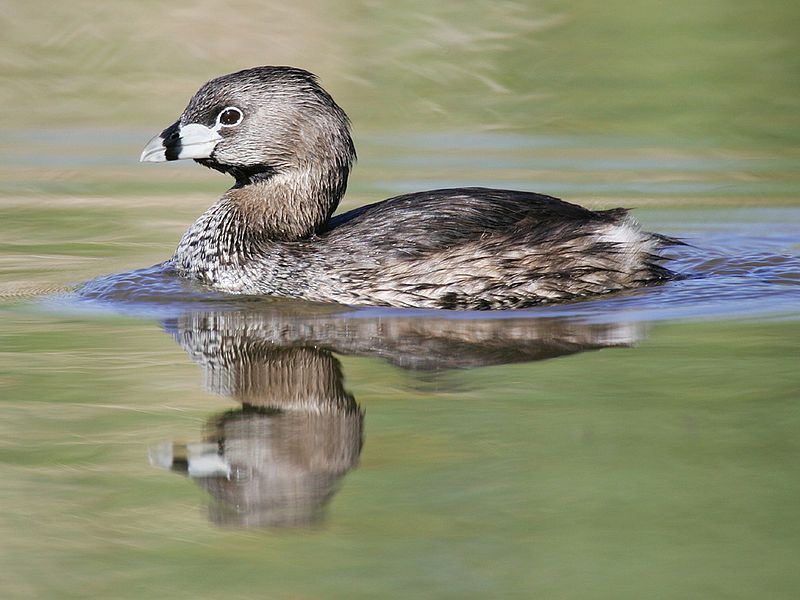
The Pied-billed Grebe is a species of bird that belongs to the Grebe family of water birds. It is the only living member of the genus Podilymbus, after the extinction of the Atitlán grebe. The pied-billed grebe is found mainly in ponds across the Americas.
Its habitat consists of freshwater and saltwater wetlands, shallow lakes, and marshes. It is a small bird with a large head, short neck, and short, thick bill, and grayish-brown plumage with a white chin and throat.
The name “Pied-Billed Grebe” comes from its distinctive black and white bill. It is an excellent swimmer and can stay submerged for long periods of time. It feeds on small fish, crustaceans, aquatic insects, and tadpoles.
The Pied-Billed Grebe is an important species in the Americas and its conservation is vital to its survival.
| Kingdom | Animalia |
| Phylum | Chordata |
| Class | Aves |
| Order | Podicipediformes |
| Family | Podicipedidae |
| Genus | Podilymbus |
| Species | P. podiceps |
4. Brown Pelican
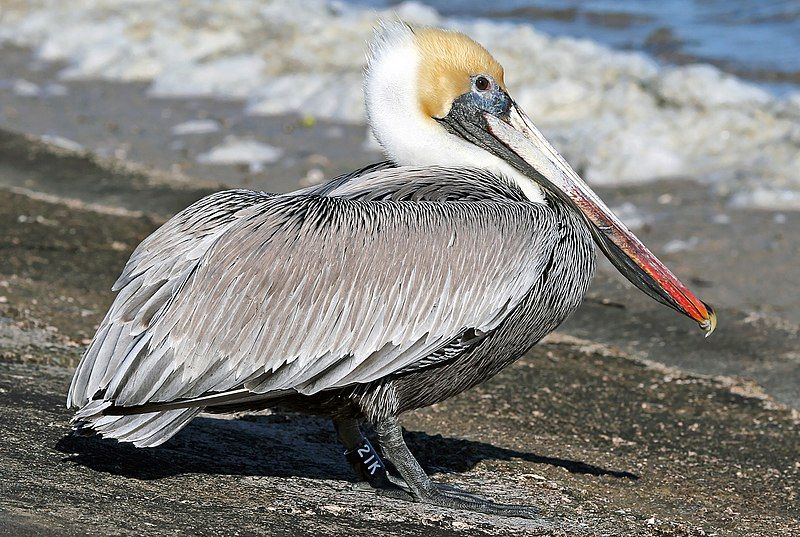
The brown pelican is a species of bird in the family Pelecanidae. It is found in the Americas and is one of three species from this family that inhabit this region. The most distinctive characteristic of the brown pelican is its feeding behavior.
Unlike most other birds, the brown pelican dives into the water to capture its prey. This behavior sets it apart from its two other American relatives which do not feed by diving.
The brown pelican’s wingspan can reach up to two meters, and its feathers are mostly brown, with a white head and a pale yellow neck. Its beak is long and curved, and its diet consists mostly of fish and other aquatic animals.
It is a social bird, typically found in groups, and is also a migratory species, traveling to and from its wintering grounds. The brown pelican is an important species for its ecosystem, playing a vital role in the food chain.
| Kingdom | Animalia |
| Phylum | Chordata |
| Class | Aves |
| Order | Pelecaniformes |
| Family | Pelecanidae |
| Genus | Pelecanus |
| Species | P. occidentalis |
5. Ruddy Ground Dove
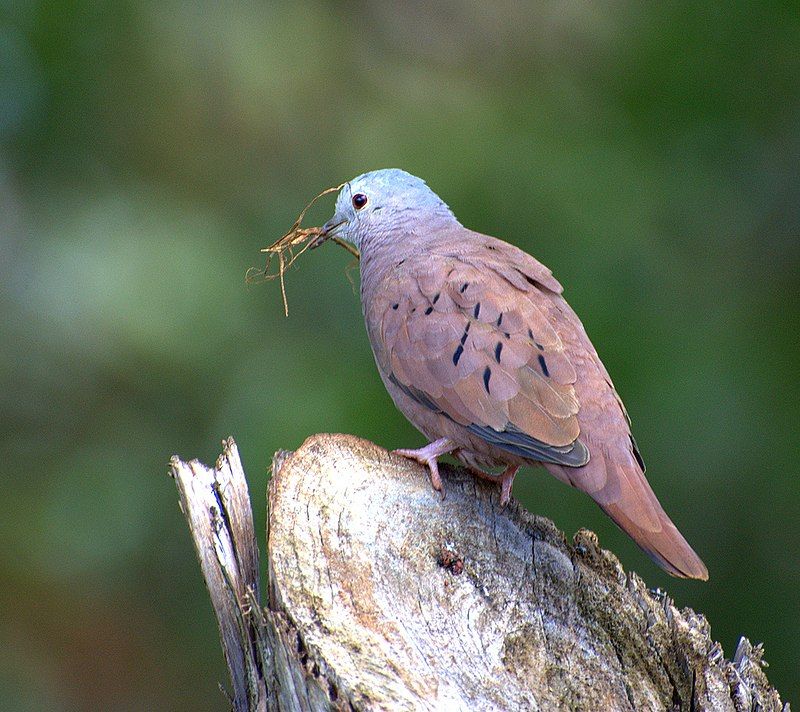
The Ruddy Ground-Dove is a species of small dove found in the tropical regions of the New World. Its range extends from Mexico down to Brazil, Peru, Paraguay, northern Argentina, and Trinidad and Tobago.
Occasionally, individuals of this species can be seen as far north as the United States, ranging from southern Texas to southern California.
This is usually during the winter season.The Ruddy Ground-Dove is a small, stocky bird, typically measuring between 20 and 24 cm in length. It is a brownish-gray color, with a dusky reddish-brown patch on its head, neck, and upper breast.
Males may have a slight greenish iridescence on their wings, and both sexes have a black tail with white tips.The Ruddy Ground-Dove is usually found in brushy habitats, such as woodland edges, pastures, and open scrub.
They prefer to feed on the ground, picking up seeds, grains, and other plant material. They are also known to eat small insects, such as ants and beetles.The Ruddy Ground-Dove is a monogamous species, and the breeding season typically occurs from April to August.
The female builds a small, bulky nest of twigs and leaves, which she lines with feathers and other soft materials. She will usually lay two eggs, which she incubates for around two weeks.
The young are fed by both parents, and they are able to fly within a few weeks of hatching.The Ruddy Ground-Dove is considered to be of the least concern, and its population is believed to be stable.
While they are sometimes hunted for food, they are not considered to be a major game species.
| Kingdom | Animalia |
| Phylum | Chordata |
| Class | Aves |
| Order | Columbiformes |
| Family | Columbidae |
| Genus | Columbina |
| Species | C. talpacoti |
6. Eurasian Collared Dove
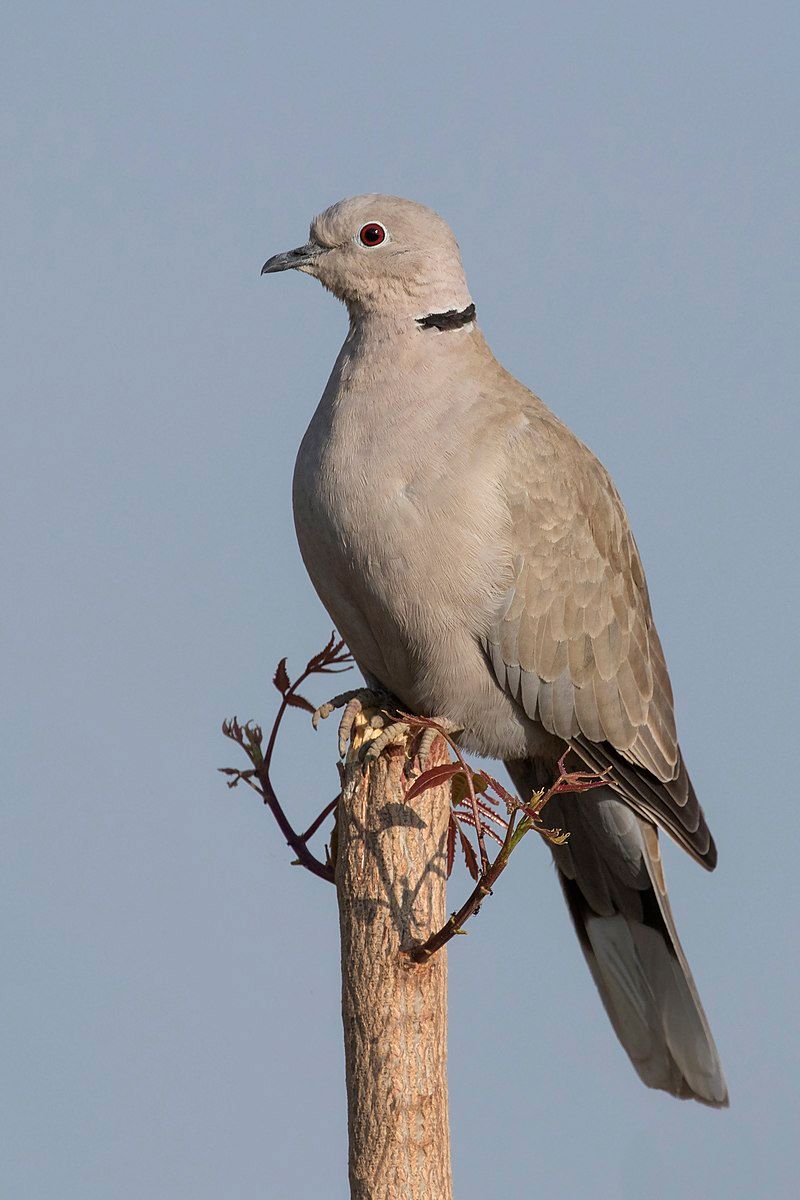
The Eurasian collared dove is a species of dove found in Europe and Asia. It has adapted to other areas of the world as well, with populations established in Japan, North America, and some Caribbean islands.
Due to its widespread distribution and increasing population, the IUCN Red List has listed it as a species of Least Concern since 2014.
This designation means that it is not currently threatened with extinction and is relatively safe from harm.The Eurasian collared dove is a medium-sized dove, with gray-brown plumage and a distinctive white collar around its neck.
Its diet primarily consists of seeds, grains, and fruits, and it is able to coexist with humans in various habitats.
It is also very adaptive, as evidenced by its presence in areas outside of its native range.The Eurasian collared dove is an excellent example of how species can adapt to new environments and thrive despite human interference.
Its success is due to its ability to find food in both natural and urban areas, as well as its resilience to human disturbance.
The species is an important part of the global ecosystem, providing food for other animals and helping to maintain healthy populations of other species.
| Kingdom | Animalia |
| Phylum | Chordata |
| Class | Aves |
| Order | Columbiformes |
| Family | Columbidae |
| Genus | Streptopelia |
| Species | S. decaocto |
7. Great Curassow
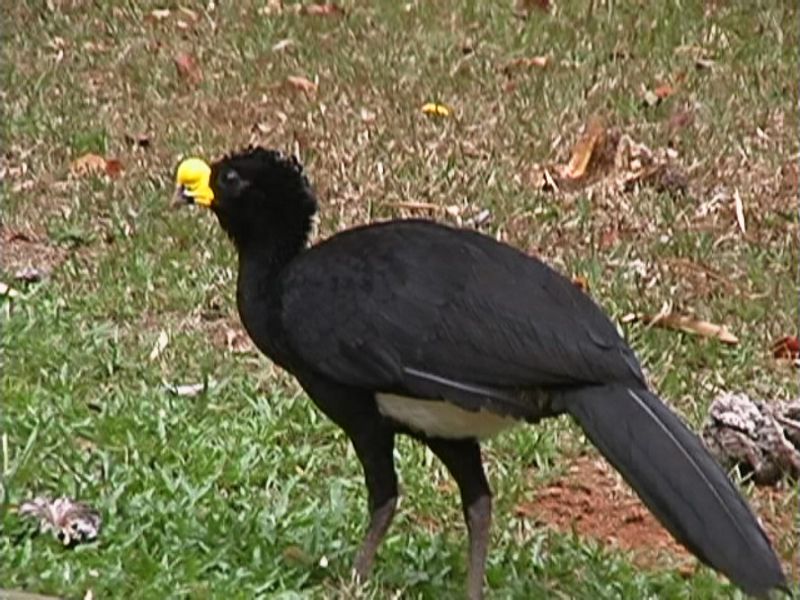
The great curassow is a large bird that is found in the Neotropical rainforests from eastern Mexico through Central America to western Colombia and northwestern Ecuador. It has a pheasant-like appearance with a curly crest and a yellow beak.
The males are black in color while the females come in three color morphs: barred, rufous, and black. The barred morph is marked with black and white stripes, the rufous morph is reddish-brown, and the black morph is completely black.
This bird is a popular aviary species, but it is threatened in its natural habitat due to deforestation and hunting. Conservation efforts are being made to help protect this species and maintain its population in the wild.
| Kingdom | Animalia |
| Phylum | Chordata |
| Class | Aves |
| Order | Galliformes |
| Family | Cracidae |
| Genus | Crax |
| Species | C. rubra |
8. Fulvous Whistling Duck
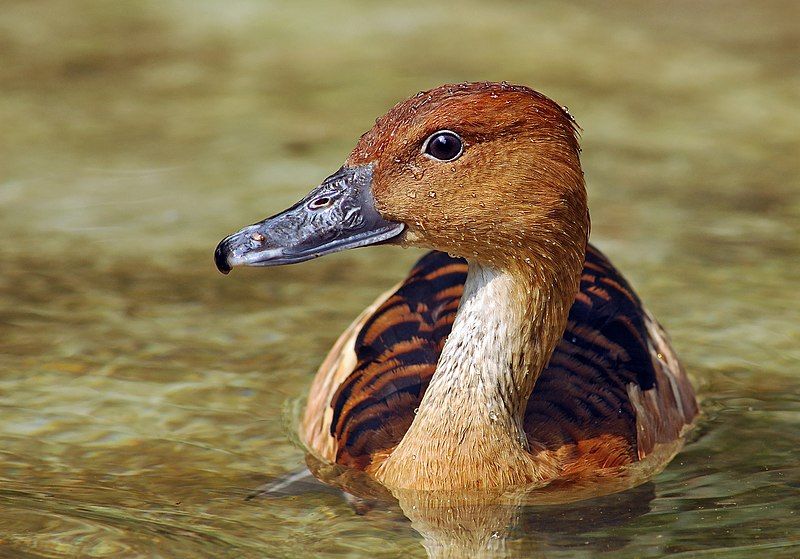
The Fulvous Whistling Duck is a species of waterfowl that is found across the world’s tropical regions. This species can be found in much of Mexico, South America, the West Indies, the southern United States, sub-Saharan Africa, and the Indian subcontinent.
They are also referred to as Fulvous Tree Ducks due to their preference for inhabiting tree-lined wetlands with plenty of shallow water. The Fulvous Whistling Duck is a medium-sized duck that has a distinctive appearance.
They have a long brown body with a pale underside and a white-tipped tail. They have bright orange legs and a bright orange beak.
Their call is a loud, melodious whistling sound that can be heard from a distance. The Fulvous Whistling Duck is generally found in freshwater wetlands such as marshes, ponds, reservoirs, and rivers. They feed mainly on aquatic vegetation, seeds, and invertebrates.
During the breeding season, they construct their nests in tree cavities or on the ground near water.
The female typically lays 8-10 eggs that are incubated for around 25 days. The Fulvous Whistling Duck is considered to be a species of least concern by the International Union for Conservation of Nature due to their large range and stable population.
However, their population is declining in some areas due to habitat degradation and hunting. It is important to protect their habitats in order to ensure the survival of this species.
| Kingdom | Animalia |
| Phylum | Chordata |
| Class | Aves |
| Order | Anseriformes |
| Family | Anatidae |
| Genus | Dendrocygna |
| Species | D. bicolor |
9. Yucatan Nightjar
The Yucatan nightjar is a species of nightjar that belongs to the Caprimulgidae family. It is a small bird that typically measures between 18-23 cm in length and weighs between 25-45 g. Its plumage is mainly grayish-brown, with some white and buff feathers.
Its wings are long and narrow and its tail is short and square-tipped. The Yucatan nightjar is found in the Central American countries of Belize, Guatemala, Mexico, and Honduras. It prefers to inhabit open areas such as savannas, grasslands, and scrublands.
It is mostly nocturnal and feeds on insects, which it catches by flying and hovering in the air. It roosts on the ground during the day. The Yucatan nightjar has a distinct call that can be heard in the night.
Its call is a loud, raspy ‘krrrr’ that can be heard from some distance away. It is a solitary bird and usually breeds during the rainy season.
It builds its nest on the ground, and the female lays a clutch of two to three eggs. The Yucatan nightjar is classified as a species of least concern by the IUCN. Although its numbers are declining, it is still fairly common in suitable habitats.
Conservation efforts are underway to ensure its continued survival and prevent its population from further decline.
| Kingdom | Animalia |
| Phylum | Chordata |
| Class | Aves |
| Clade | Strisores |
| Order | Caprimulgiformes |
| Family | Caprimulgidae |
| Genus | Antrostomus |
| Species | A. badius |
10. Black Throated Bobwhite
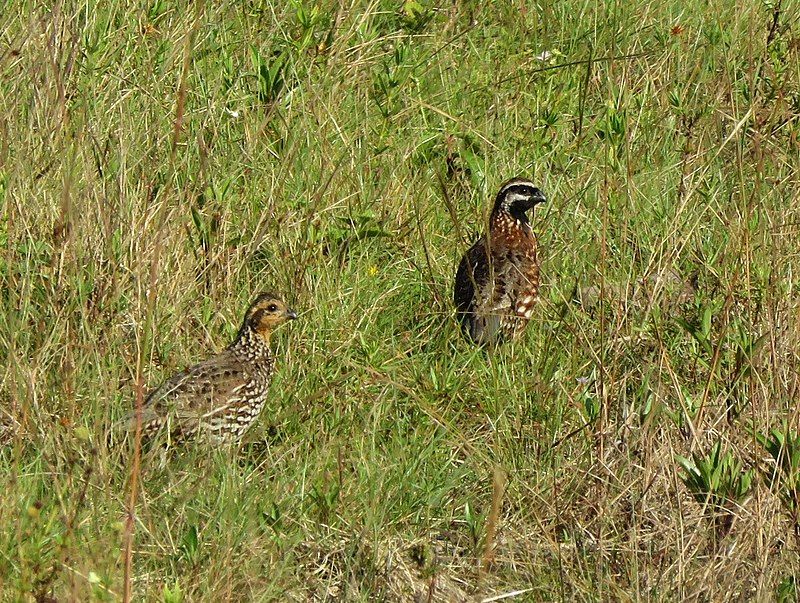
The Yucatan bobwhite, also known as the black-throated bobwhite, is a species of bird in the family Odontophoridae.
This species is native to Central America, where it can be found in Belize, Guatemala, Honduras, Mexico, and Nicaragua. The Yucatan bobwhite is a medium-sized bird, usually measuring between 10-11 inches in length.
Its plumage is mostly greyish-brown, with a black throat and a white patch on its lower belly. It also has a white face with a black stripe extending from the bill to the back of the head.
The tail is moderately long and rounded. The Yucatan bobwhite feeds primarily on seeds and insects.
It prefers open grasslands and shrubby areas and can be found in a variety of habitats including tropical dry forests, savannas, and agricultural lands. The Yucatan bobwhite is a monogamous species and typically nests in pairs.
The nest is usually a shallow scrape on the ground lined with grass and other vegetation.
The female lays a clutch of eggs, usually ranging from 2 to 6, which are incubated by both the male and female. The Yucatan bobwhite is considered to be of least concern by the International Union for the Conservation of Nature.
Its population is considered to be stable, though it is vulnerable to habitat loss due to deforestation and other human activities.
| Kingdom | Animalia |
| Phylum | Chordata |
| Class | Aves |
| Order | Galliformes |
| Family | Odontophoridae |
| Genus | Colinus |
| Species | C. nigrogularis |
11. Anhinga
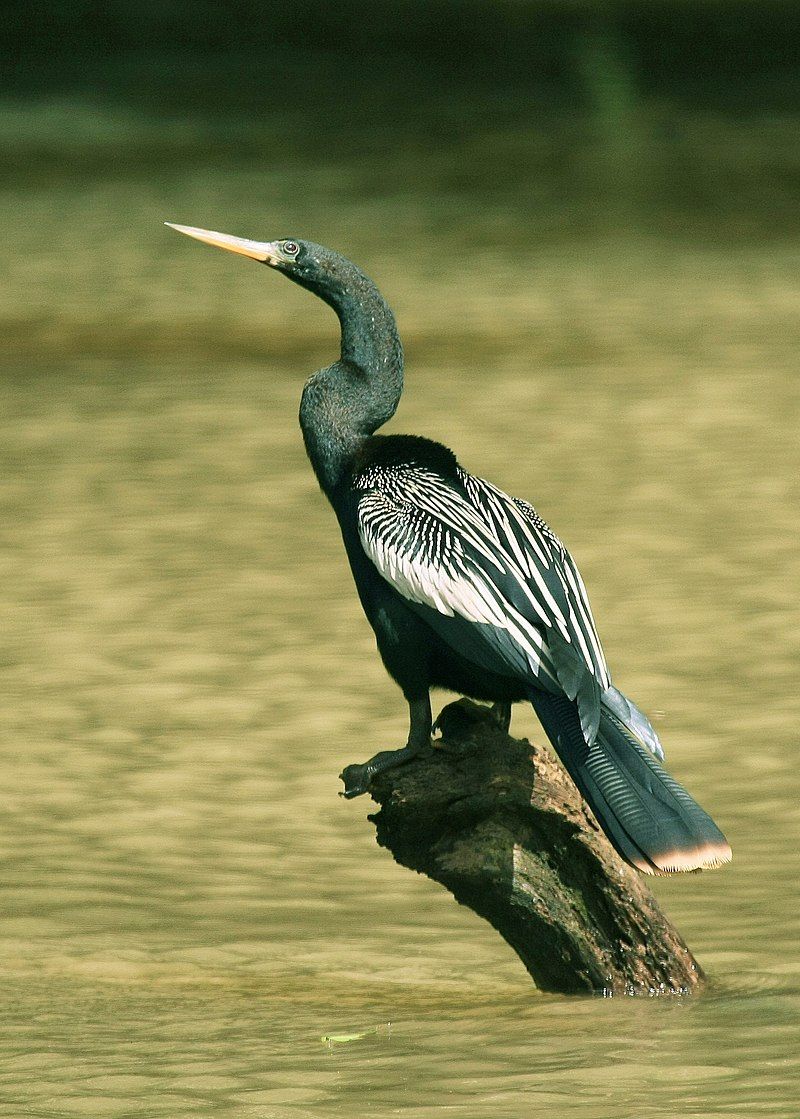
The anhinga is a unique water bird that is found in warmer parts of the Americas. It has many different names, with the most common being snakebird, darter, American darter, and water turkey. These alternative names give insight into the anhinga’s appearance and behavior.
Its long neck, pointed beak, and slender body have earned it the nickname “snakebird” due to its snake-like appearance.
Its fast and agile underwater hunting skills have earned it the name “darter,” while its large size and dark plumage have earned it the name “water turkey.”The origin of the anhinga’s name is interesting.
It comes from the Brazilian Tupi language, where it is written as “a’ñinga” and translates to “devil bird” or “snake bird.” This is fitting, as the anhinga’s physical characteristics and behavior can certainly be intimidating. The anhinga is a fascinating creature and is certainly an important part of the Americas’ wildlife.
Its unique features and behavior make it a captivating creature to observe and appreciate.
| Kingdom | Animalia |
| Phylum | Chordata |
| Class | Aves |
| Order | Suliformes |
| Family | Anhingidae |
| Genus | Anhinga |
| Species | A. anhinga |
12. Black-billed Cuckoo
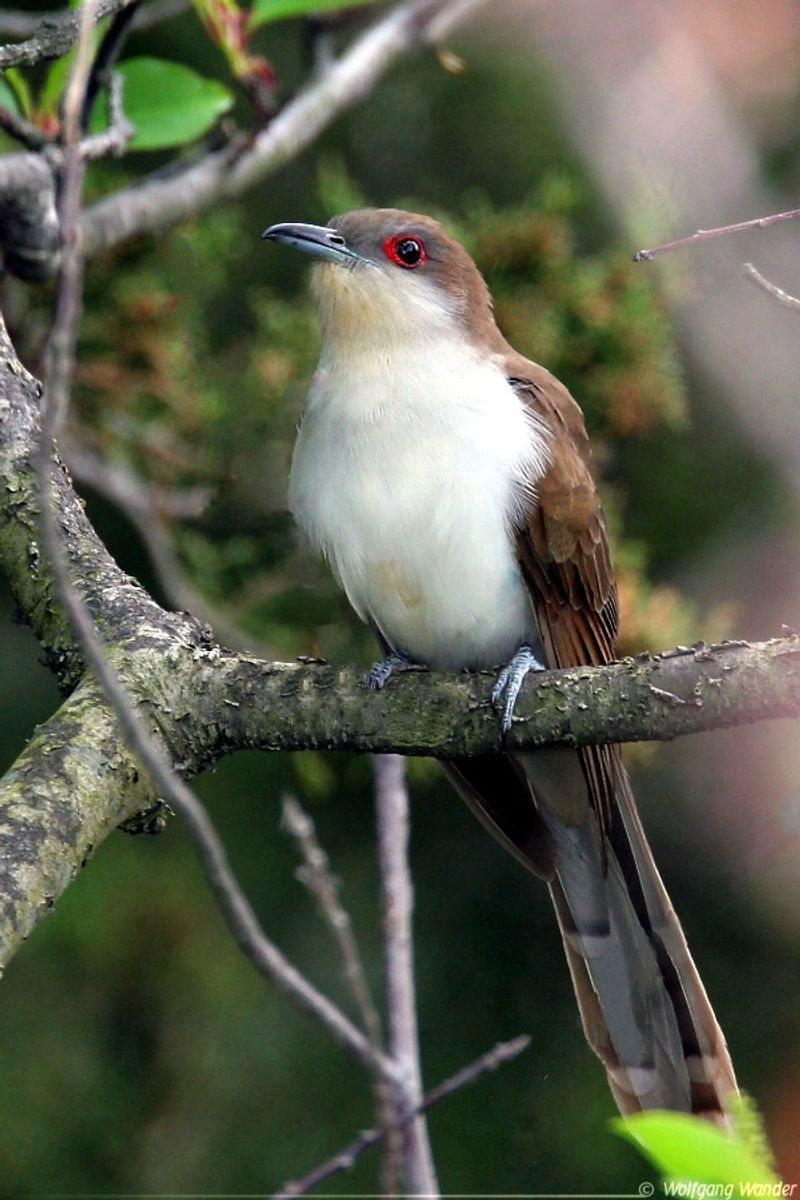
The black-billed cuckoo is a species of bird found in the New World, belonging to the Cuculidae family. Its scientific name is derived from Ancient Greek, with the genus name of Kokkuzo being derived from the Greek verb kokkuzein, which means “to call like a cuckoo”.
The species name, erythropthalmus, is also derived from Greek, with authors meaning “red” and ophthalmic meaning “eye”. This name implies that the bird has red eyes, which is one of its prominent characteristics.
Black-billed cuckoos are found in North America, from southern Canada down to northern Mexico. They are migratory, with some individuals traveling as far south as northern South America during the winter months.
These birds typically inhabit woodland areas, where they feed on insects and small invertebrates. They have a distinctive call, which has been described as a “ka-ka-ka” or a “coo-coo-coo”.
The black-billed cuckoo is an important part of the North American ecosystem, and its numbers have seen a sharp decline in recent years. This is likely due to the loss of habitat and changes in climate.
Conservation efforts are being made to protect this species, which is a vital part of the food chain in these areas.
| Kingdom | Animalia |
| Phylum | Chordata |
| Class | Aves |
| Order | Cuculiformes |
| Family | Cuculidae |
| Genus | Coccyzus |
| Species | C. erythropthalmus |
13. Black-necked Stilt
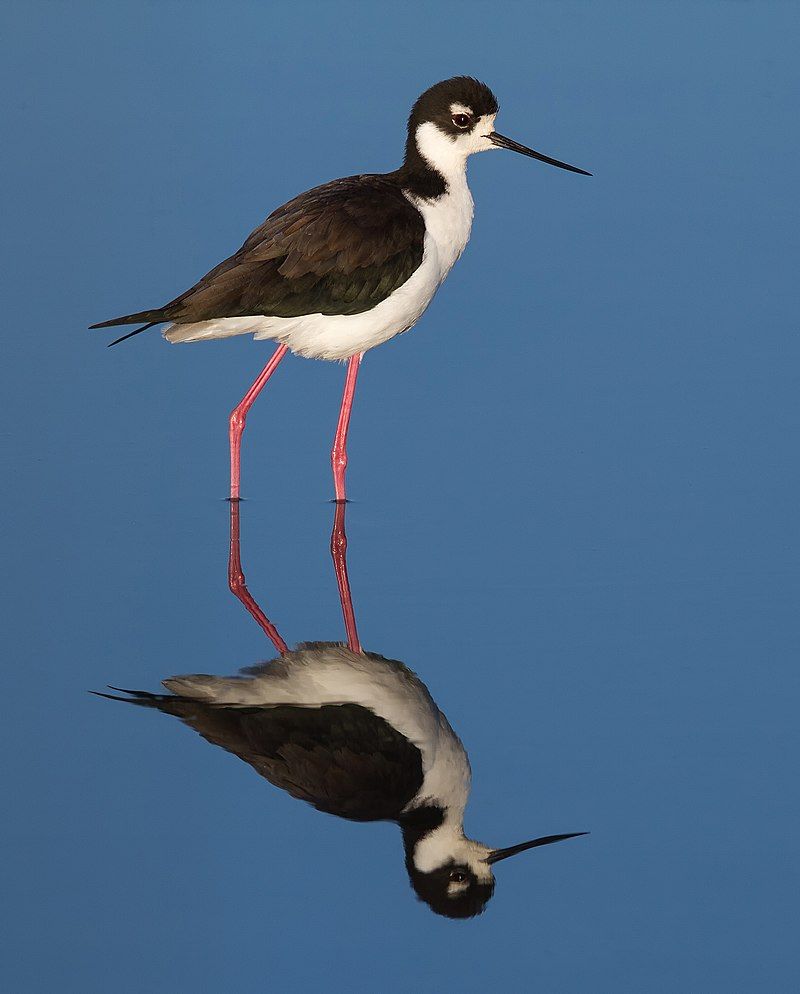
The black-necked stilt is a species of shorebird commonly found in wetlands and coastlines of the United States.
Its range stretches from coastal California all the way to the interior of the western United States, ranging from Texas and Oklahoma to the Rocky Mountains, and along the Gulf Coast and Atlantic Coast as far north as Maryland.
In addition to its range in the United States, this species of stilt can also be found in Mexico, Central America, and South America. The black-necked stilt is a wading bird, meaning it prefers shallow bodies of water, such as marshes, estuaries, mudflats, lagoons, and shallow lakes.
During the breeding season, the stilt will also inhabit dry, grassy fields and meadows.
The bird’s diet consists mainly of insects, crustaceans, and small fish which it obtains by wading in the water and using its long, thin legs to reach the bottom of shallow pools. The black-necked stilt is also an important indicator species for wetland health.
Its presence in an area is a good indication that the habitat is healthy and suitable for a wide variety of other species. Unfortunately, the species is threatened by human activities such as agricultural and urban development which destroy its habitat.
Conservation efforts are being made to protect the species and its habitat so that it will continue to be a locally abundant shorebird of American wetlands and coastlines.
| Kingdom | Animalia |
| Phylum | Chordata |
| Class | Aves |
| Order | Charadriiformes |
| Family | Recurvirostridae |
| Genus | Himantopus |
| Species | H. mexicanus |
14. Rock Dove
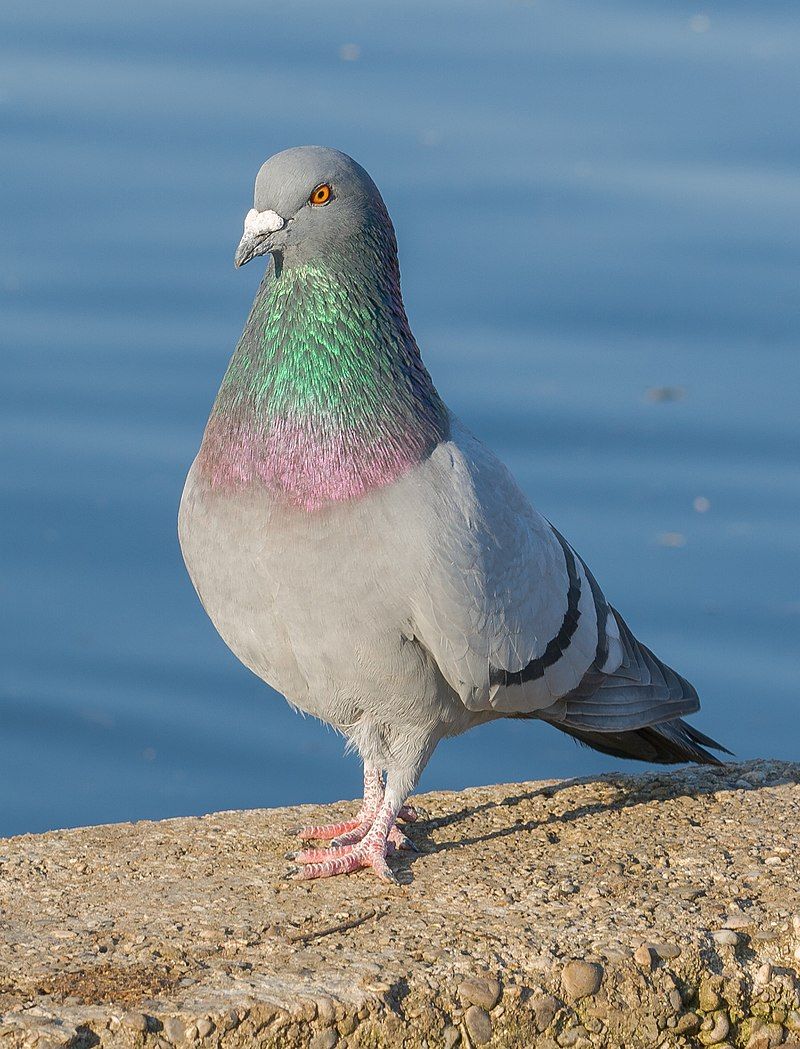
The rock dove, rock pigeon, or common pigeon is a species of bird that belongs to the Columbidae family. It is commonly referred to as simply the “pigeon”. The domestic pigeon is a descendant of this wild species, which has been around for thousands of years.
In recent years, many domestic pigeons have escaped into the wild and as a result, the population of feral pigeons has dramatically increased around the world. Feral pigeons are those that originated from domesticated birds but have returned to living in the wild.
These birds are often seen in urban areas, scavenging for food and nesting in man-made structures.
| Kingdom | Animalia |
| Phylum | Chordata |
| Class | Aves |
| Order | Columbiformes |
| Family | Columbidae |
| Genus | Columba |
| Species | C. livia |
15. Crested Guan
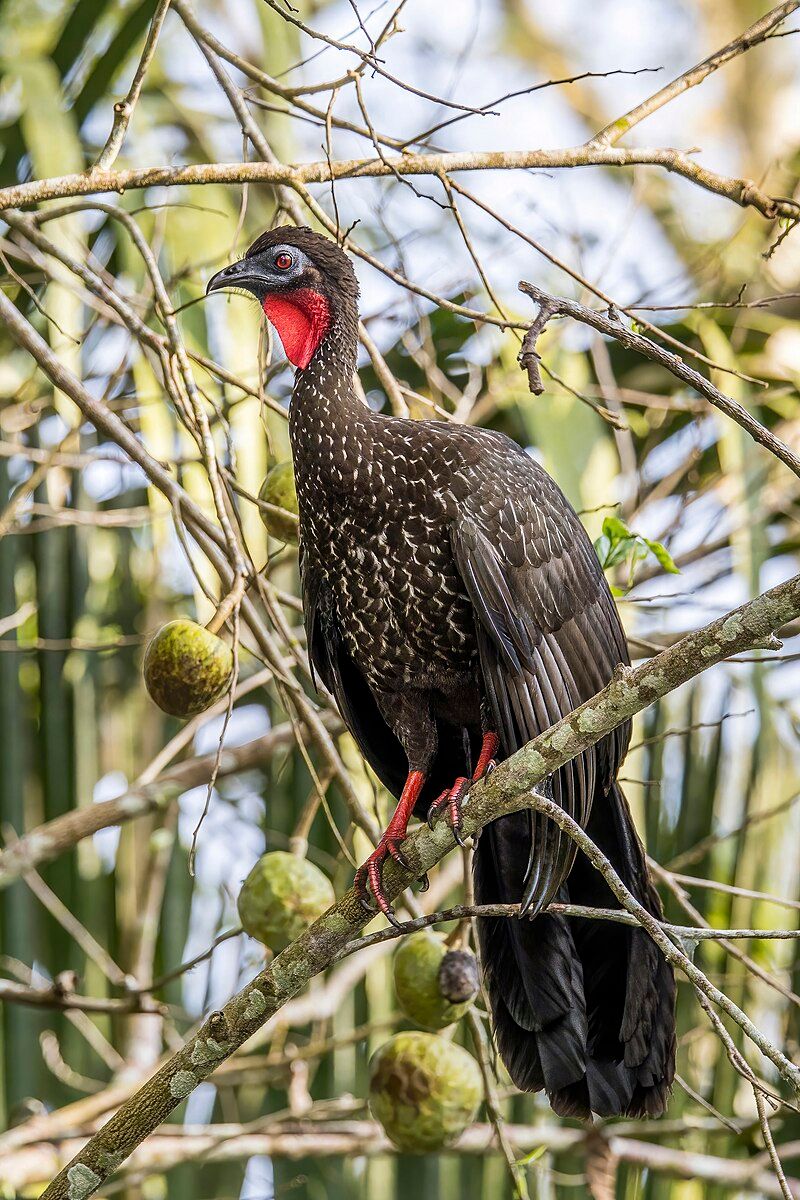
The crested guan is a species of bird belonging to the Cracidae family. This family is part of an old group of birds that are related to the Australasian megapodes, which are also known as mound builders.
This species can be found in the Neotropics, which is a region comprising Central and South America, Mexico, and the Caribbean islands.
The crested guan is usually found in lowland forests, ranging from south Mexico and the Yucatán Peninsula to western Ecuador and southern Venezuela. The forests that they inhabit are usually humid and tropical, with plenty of trees providing shade and food for them.
The crested guan is usually found in small flocks, eating fruits and seeds from the trees. They are also known to eat insects and small animals. The crested guan is a medium-sized bird, measuring between 28 and 33 cm in length.
They have a distinctive crest on their head, which is usually colored black and white. They also have a bright red bill and legs. The crested guan is listed as a species of least concern by the IUCN, as its population is estimated to be stable.
| Kingdom | Animalia |
| Phylum | Chordata |
| Class | Aves |
| Order | Galliformes |
| Family | Cracidae |
| Genus | Penelope |
| Species | P. purpurascens |
16. Magnificent Frigatebird
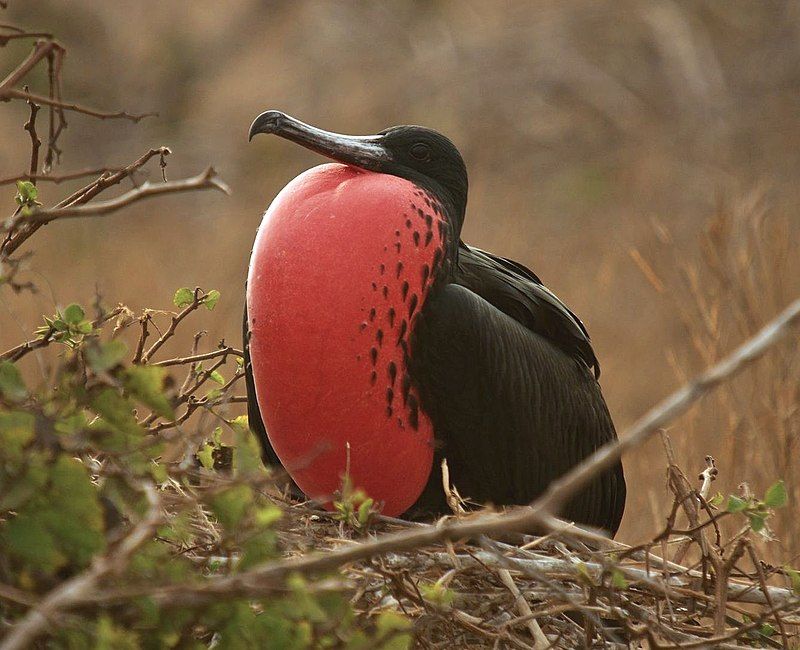
The magnificent frigatebird is one of the most impressive and striking seabirds. It is a member of the Fregatidae family, otherwise known as the frigatebird family.
It is a large species of frigatebird, with an impressive wingspan of 2.17–2.44 meters and a body length of 89–114 centimeters. This makes it the largest frigatebird species in the world.
Its wings are long and pointed, and its tail is forked. The magnificent frigatebird is well adapted to life at sea, with its powerful wings allowing it to soar above the ocean for long periods of time.
It is a graceful flier, and its wings are so large that it can often be seen gliding over the ocean in search of food.
It feeds mainly on squid, flying fish, and other small marine creatures. The magnificent frigatebird is usually seen in flocks and is known for its loud, distinctive calls. Its black feathers are glossy and iridescent, giving it a unique and striking appearance.
Its head and neck are bare, and its bill is long and hooked. The magnificent frigatebird is a beautiful sight to behold, and it is definitely one of the most impressive species of seabird.
With its impressive size and striking features, it is not hard to see why it has become a symbol of grace and power.
| Kingdom | Animalia |
| Phylum | Chordata |
| Class | Aves |
| Order | Suliformes |
| Family | Fregatidae |
| Genus | Fregata |
| Species | F. magnificens |
17. Lesser Swallow-tailed Swift
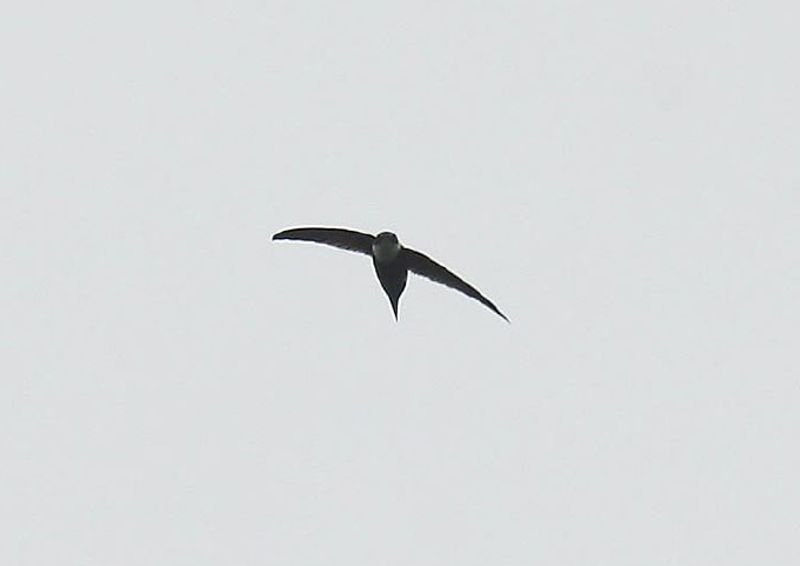
The lesser swallow-tailed swift, also known as the Cayenne swift, is a species of bird that belongs to the subfamily Apodinae of the swift family Apodidae.
It is native to parts of Mexico, Central America, and many countries in mainland South America, excluding Argentina, Chile, Paraguay, and Uruguay.
The lesser swallow-tailed swift is also present on the island of Trinidad. These birds have a dark gray body and white underparts, and their tail is forked and has a white stripe running down the center. They live in open woodlands and savannahs, and they feed mainly on insects.
They are also known to fly in large flocks, although they are relatively quiet compared to other species of swifts. These birds migrate in the winter, flying south to parts of Mexico and Central America, and some even make it as far as Trinidad.
They are capable of flying for long distances, and they can reach speeds of up to 30 mph. The lesser swallow-tailed swift is not considered to be threatened or endangered, and it is listed as a species of least concern by the International Union for Conservation of Nature.
| Kingdom | Animalia |
| Phylum | Chordata |
| Class | Aves |
| Clade | Strisores |
| Order | Apodiformes |
| Family | Apodidae |
| Genus | Panyptila |
| Species | P. cayennensis |
18. Northern Jacana
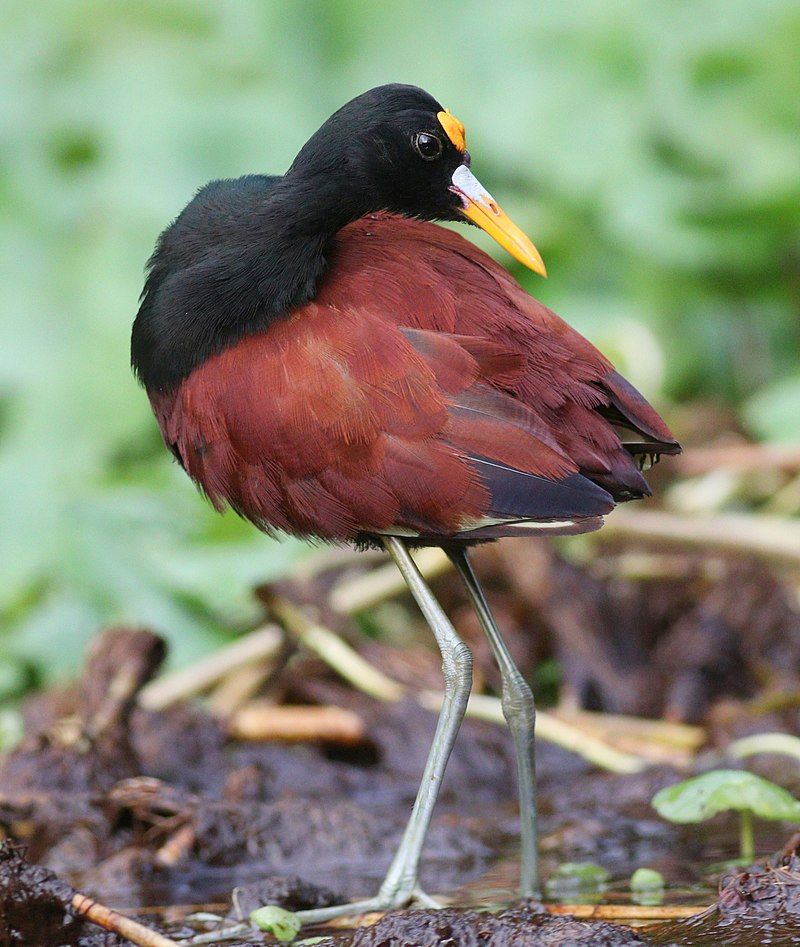
The northern jacana, also known as the northern jaçana, is a wading bird that breeds in many areas of the Americas. It is a resident breeder in coastal Mexico, western Panama, as well as Cuba, Jamaica, and Hispaniola in the Caribbean.
It has also been spotted in Texas, the United States, and a few times in Arizona, although not as a resident. The northern jacana is a common sight in marshy wetlands where it feeds on insects, crustaceans, and amphibians.
It has a bright yellow face, chest and belly, and black wings and back. Its long toes are adapted for wading in shallow water and its long toes also help it to walk on lily pads. The northern jacana is an impressive bird that has a unique ability to stand on one foot to feed.
It is a highly vocal species and its call is a loud, chattering sound.
| Kingdom | Animalia |
| Phylum | Chordata |
| Class | Aves |
| Order | Charadriiformes |
| Family | Jacanidae |
| Genus | Jacana |
| Species | J. spinosa |
19. Red-breasted Merganser
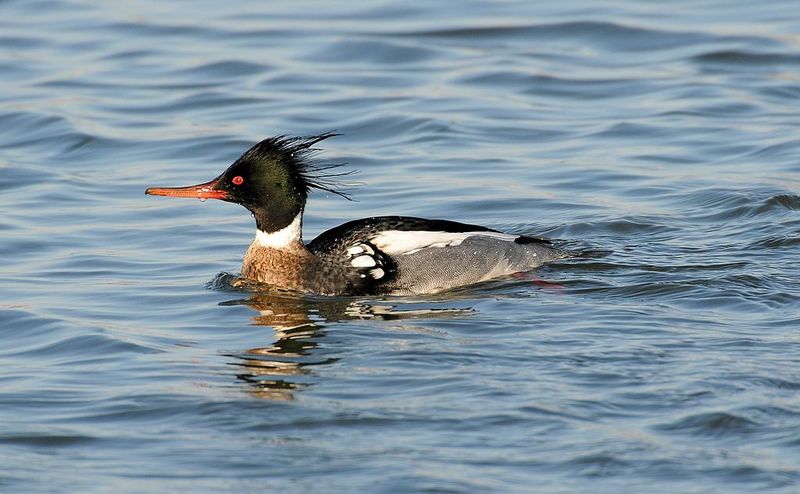
The red-breasted merganser is a species of duck native to many parts of the Northern Hemisphere. It is often recognized by its bright red breast, which is only displayed by males in their breeding plumage.
The red-breasted merganser is a medium-sized duck, with males growing up to 20 inches in length and females growing up to 17 inches. The male’s breeding plumage is black and white above, with a bright red chest and a grey-blue head.
The female’s plumage is mainly brown and grey, with a pale-colored head and a white throat. The red-breasted merganser lives in a range of habitats, including wetlands, coastal areas, and rivers. It feeds mainly on fish, but also on invertebrates and small mammals.
The red-breasted merganser is a popular bird among birdwatchers and hunters, and it is listed as a species of least concern by the International Union for Conservation of Nature.
| Kingdom | Animalia |
| Phylum | Chordata |
| Class | Aves |
| Order | Anseriformes |
| Family | Anatidae |
| Genus | Mergus |
| Species | M. serrator |
20. Great Tinamou
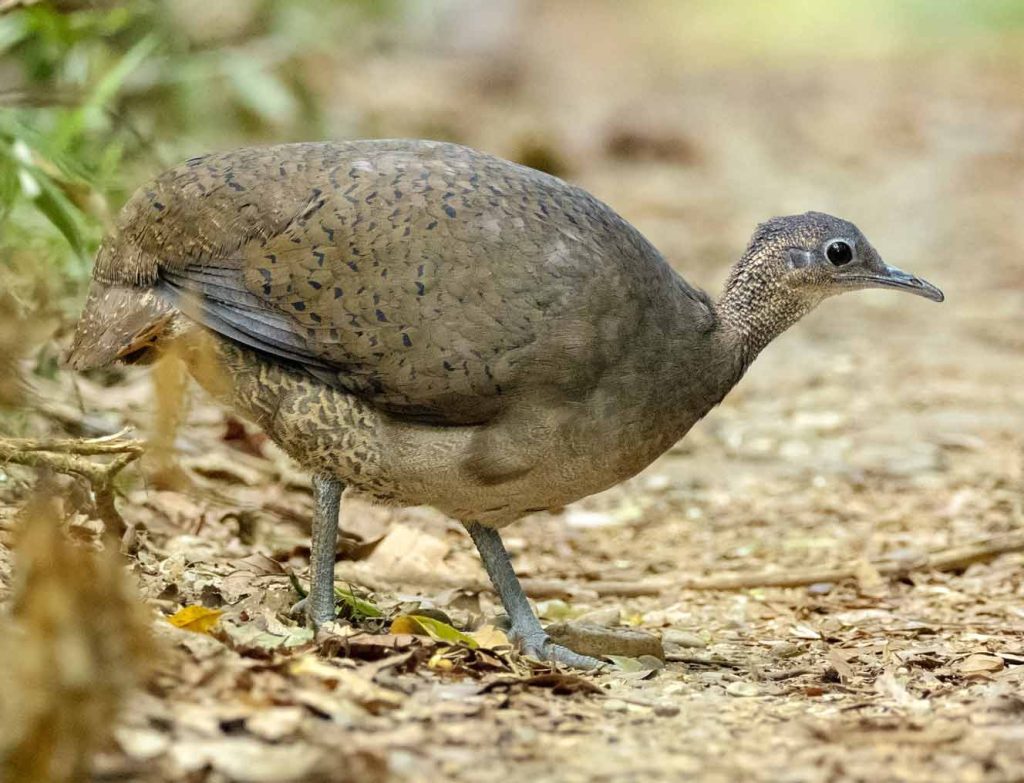
Source: ebird.org
The great tinamou is an omnivorous ground bird native to Central and South America. It is a type of tinamou, a family of birds that includes over 40 species. The great tinamou is one of the largest species in the family, measuring up to 30 centimeters in length.
It has a dark-brown head and neck, and the rest of its body is mostly gray or brown. Its wings and tail are striped with white. The great tinamou can be found in a variety of habitats, from tropical and subtropical forests to grasslands and mountains.
It is usually found alone or in small groups, and it feeds on a wide range of foods such as fruits, seeds, and small invertebrates. Within the great tinamou species, there are several subspecies, which are mostly differentiated by their coloration.
These variations can range from reddish-brown to olive green, and some have more distinct white stripes on their wings and tail feathers. There are also some differences in their habitat preferences, with some preferring mountains and others preferring lowland forests.
| Kingdom | Animalia |
| Phylum | Chordata |
| Class | Aves |
| Order | Tinamiformes |
| Family | Tinamidae |
| Genus | Tinamus |
| Species | T. major |
21. Striped Cuckoo
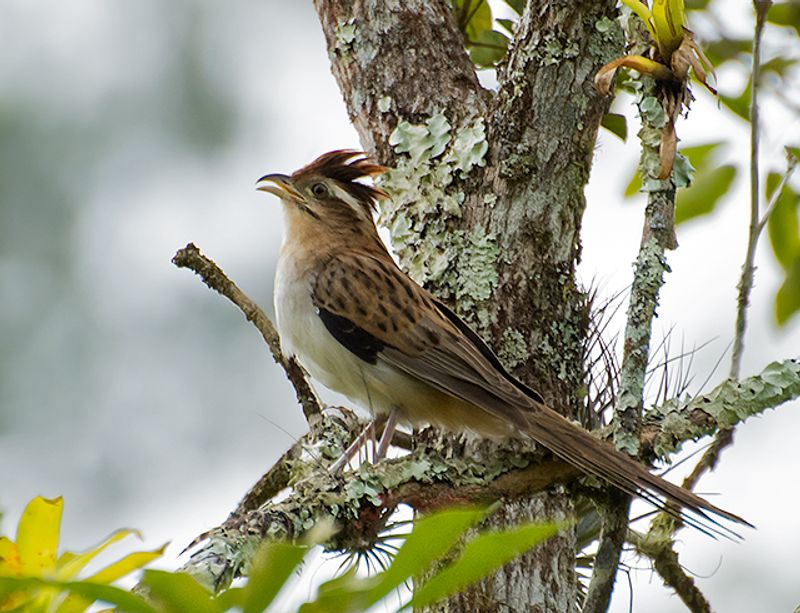
The Striped Cuckoo is a special bird, as it is the only member of its genus, Tapera. It is a Near-Passerine bird, which means it is closely related to the type of birds known as “perching birds” or “songbirds”.
This bird is found in Mexico, Trinidad, Bolivia, and Argentina, and it typically lives in open country with trees or shrubs, or in the edges of mangrove forests.
This indicates that the Striped Cuckoo has a wide range of habitats, from tropical forests to open areas with plenty of vegetation. The Striped Cuckoo is a resident species, meaning it does not migrate often, but remains in its chosen habitat year-round.
This bird is often seen perching in trees or shrubs or hunting for food on the ground. It is an omnivorous species, with a diet consisting of insects, small reptiles, fruits, and seeds.
The Striped Cuckoo is a unique and interesting bird that can be found in many different habitats throughout its range.
| Kingdom | Animalia |
| Phylum | Chordata |
| Class | Aves |
| Order | Cuculiformes |
| Family | Cuculidae |
| Genus | Tapera |
| Species | T. naevia |
22. American Flamingo
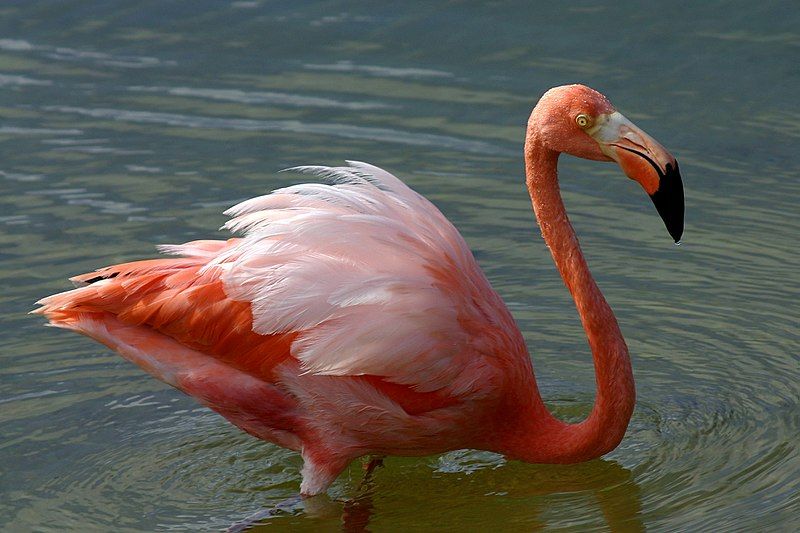
The American flamingo is a species of flamingo that is closely related to the greater flamingo and Chilean flamingo. It is native to the Neotropics, which is a region in the Americas that contains tropical and subtropical forests and grasslands.
It was previously thought that the American flamingo was the same species as the greater flamingo, however, due to a lack of evidence, this is no longer accepted. As a result, the American flamingo is now considered to be a separate species from the greater flamingo.
The American flamingo is typically larger in size than the greater flamingo, standing up to five feet tall and weighing up to 11 pounds. They have a unique pinkish-white coloration on their feathers and long, slender legs.
Additionally, they have long, curved necks and long, curved beaks. They feed mainly on plankton, insects, and crustaceans, and can be found in wetlands, lakes, and lagoons.
| Kingdom | Animalia |
| Phylum | Chordata |
| Class | Aves |
| Order | Phoenicopteriformes |
| Family | Phoenicopteridae |
| Genus | Phoenicopterus |
| Species | P. ruber |
23. American Oystercatcher
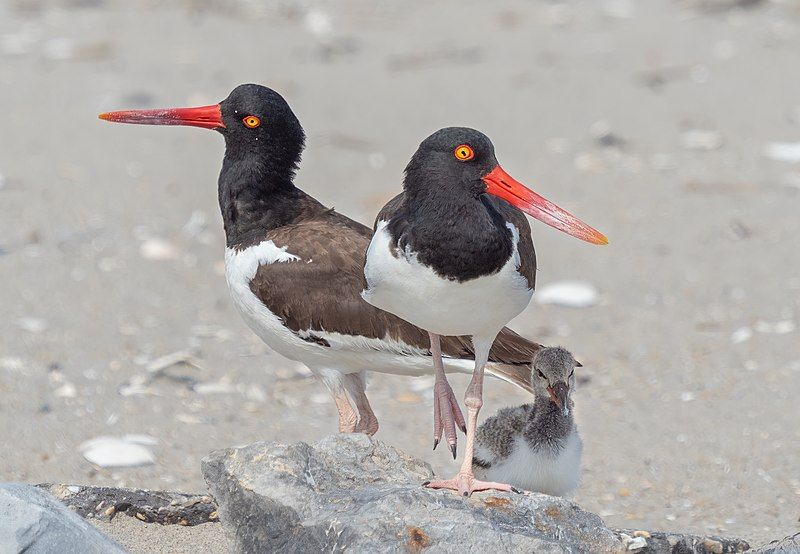
The American oystercatcher is a bird that belongs to the family of Haematopodidae and is also known under the names of American pied oystercatcher and PiruPiru.
It was initially referred to as the “sea pie”, but the name changed in 1731 after Mark Catesby, a naturalist, noticed that the bird was actually feeding on oysters.
The American oystercatcher is a shorebird that is typically found in coastal areas where it can find its favorite food – oysters. The bird has a distinctive appearance, with a white head and neck, black eyes, and a black body with bright orange legs and bills.
The bird’s diet consists mainly of bivalves, such as clams, mussels, and oysters, which it finds and cracks open with its strong bill. It is also known to eat worms, insects, and crustaceans.
The American oystercatcher is an important species for maintaining the health of coastal ecosystems, as it helps to keep the oyster populations in check by predating on them.
| Kingdom | Animalia |
| Phylum | Chordata |
| Class | Aves |
| Order | Charadriiformes |
| Family | Haematopodidae |
| Genus | Haematopus |
| Species | H. palliatus |
24. Chuck-will’s-Widow
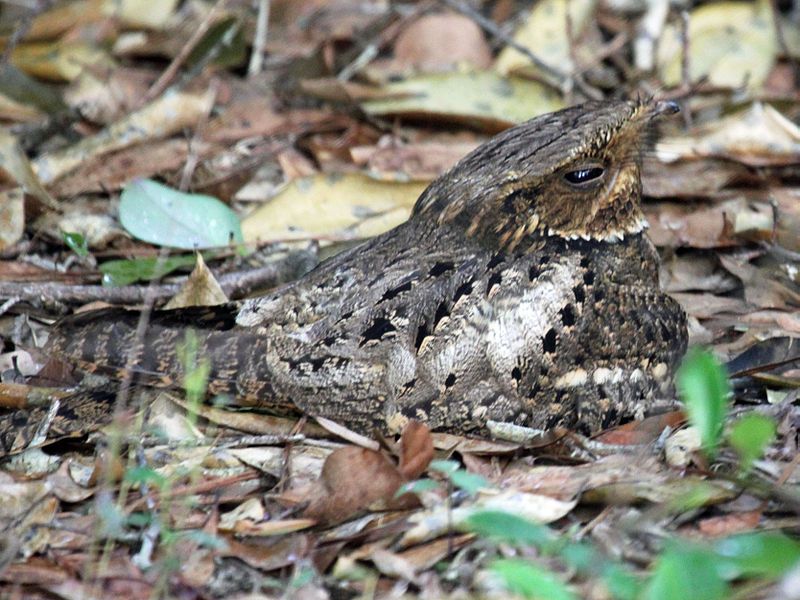
The chuck-will’s-widow is a species of nightjar, belonging to the family Caprimulgidae. It is a nocturnal bird, and can mainly be found in the southeastern United States.
It prefers habitats such as swamps, rocky uplands, and pine woods, and migrates to other areas in the winter season. These areas include the West Indies, Central America, and northwestern South America.
The chuck-will’s-widow’s plumage is noted to be cryptically colored, allowing it to blend in with its environment. Its primary diet consists of beetles, moths, and other flying insects, which it can hunt with its incredibly keen vision.
It forages at night when its prey is most active. The chuck-will’s-widow is a fascinating bird, as it is capable of making a variety of sounds to communicate with other members of its species.
The most distinctive call of this species is a loud, repetitive “chuck-will’s-widow” call, which can be heard at night. This species is also known to make a purring noise, as well as a trilling sound.
Overall, the chuck-will’s-widow is an interesting species of bird, with a unique set of adaptations that allow it to survive in its habitat. Its ability to migrate and its cryptic coloration makes it well-suited for life in the southeastern United States.
Its loud call is a distinctive feature of its species, and its diet of insects makes it an efficient predator.
| Kingdom | Animalia |
| Phylum | Chordata |
| Class | Aves |
| Clade | Strisores |
| Order | Caprimulgiformes |
| Family | Caprimulgidae |
| Genus | Antrostomus |
| Species | A. carolinensis |
Conclusion
Birds in Campeche are a great source of beauty and joy for people who live in or visit the region. They provide a wonderful opportunity to observe and appreciate nature’s beauty in its many forms.
With its diverse habitats, Campeche is home to a wide variety of birds, ranging from the majestic royal eagles to the brightly colored parakeets.
The region’s birds are an important part of the local culture and economy, providing important ecological services such as pollination, seed dispersal, and pest control.
Conservation efforts are needed to ensure that the birds of Campeche can continue to thrive and be enjoyed by future generations.